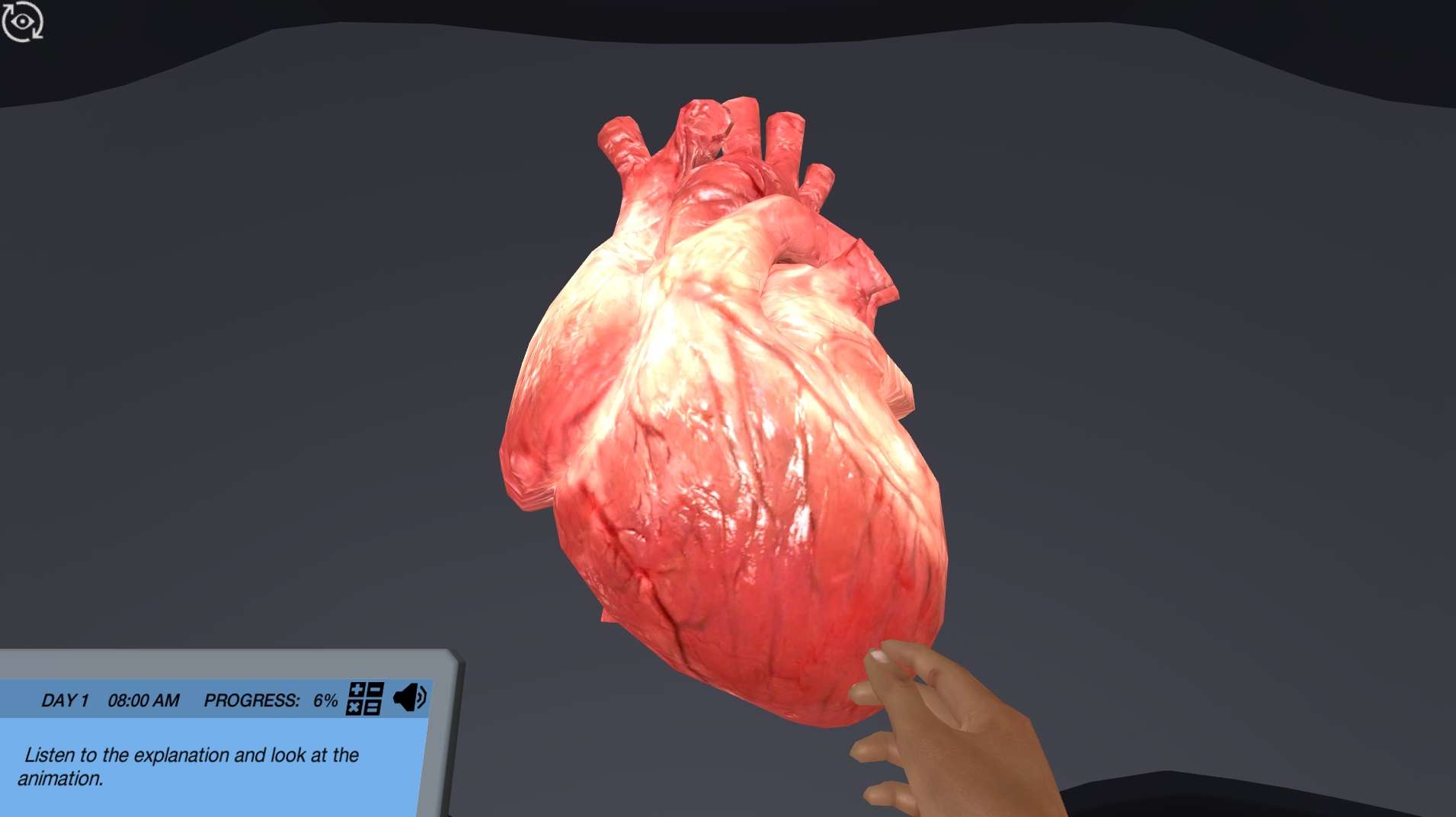Heading 1
Heading 2
Heading 3
Heading 4
Heading 5
Heading 6
Lorem ipsum dolor sit amet, consectetur adipiscing elit, sed do eiusmod tempor incididunt ut labore et dolore magna aliqua. Ut enim ad minim veniam, quis nostrud exercitation ullamco laboris nisi ut aliquip ex ea commodo consequat. Duis aute irure dolor in reprehenderit in voluptate velit esse cillum dolore eu fugiat nulla pariatur.
Block quote
Ordered list
- Item 1
- Item 2
- Item 3
Unordered list
- Item A
- Item B
- Item C
Bold text
Emphasis
Superscript
Subscript
About This Simulation
Use medical tests to gather information about patients and determine how their cardiovascular systems respond to different exercise intensities.
Learning Objectives
- Understand how the respiratory and cardiovascular system responds during exercise
- Understand how cardiac output and blood pressure can be measured
- Understand how heart rate, stroke volume, cardiac output and total peripheral resistance change with exercise
- Interpret data to assess possible cardiovascular problems during exercise
About This Simulation
Lab Techniques
- Analyze cardiovascular system variables
- Doppler ultrasound
- Blood pressure measured using a sphygmomanometer and stethoscope
Related Standards
- HS-LS1-3
- No direct alignment
- Biology D.4 The heart
Learn More About This Simulation
Exercising can be hard. In this simulation you’ll discover why that is, and learn how your cardiovascular system behaves at rest and at different exercise intensities. This will give you an understanding of what is happening inside your body when exercising.
Understand the cardiovascular system function
Using different study subjects, you will first learn how the cardiovascular system changes when exercising. By observing different exercise intensities, you will be able to see how the functionality of the cardiovascular system progressively changes.
Measure several cardiovascular variables
In the simulation, you will measure the blood pressure of your study subject, like you would in real life. You will also determine systolic and diastolic blood pressure by using a sphygmomanometer. You can listen to the blood flowing through the arteries with the stethoscope as many times as you want, until you find the study subject’s blood pressure. You will also be able to measure heart rate, stroke volume and cardiac output thanks to the advanced doppler ultrasound machine.
Run an experiment with several study subjects
Last, you will run an experiment with several study subjects at once. You will measure the above mentioned variables in patients at different exercise intensities, giving you a clear picture of how the functionality of the cardiovascular system changes with exercise intensity, and perhaps letting you discover mechanisms that you didn’t even know existed…
For Science Programs Providing a Learning Advantage
Boost STEM Pass Rates
Boost Learning with Fun
75% of students show high engagement and improved grades with Labster
Discover Simulations That Match Your Syllabus
Easily bolster your learning objectives with relevant, interactive content
Place Students in the Shoes of Real Scientists
Practice a lab procedure or visualize theory through narrative-driven scenarios


FAQs
Find answers to frequently asked questions.
Heading 1
Heading 2
Heading 3
Heading 4
Heading 5
Heading 6
Lorem ipsum dolor sit amet, consectetur adipiscing elit, sed do eiusmod tempor incididunt ut labore et dolore magna aliqua. Ut enim ad minim veniam, quis nostrud exercitation ullamco laboris nisi ut aliquip ex ea commodo consequat. Duis aute irure dolor in reprehenderit in voluptate velit esse cillum dolore eu fugiat nulla pariatur.
Block quote
Ordered list
- Item 1
- Item 2
- Item 3
Unordered list
- Item A
- Item B
- Item C
Bold text
Emphasis
Superscript
Subscript
A Labster virtual lab is an interactive, multimedia assignment that students access right from their computers. Many Labster virtual labs prepare students for success in college by introducing foundational knowledge using multimedia visualizations that make it easier to understand complex concepts. Other Labster virtual labs prepare learners for careers in STEM labs by giving them realistic practice on lab techniques and procedures.
Labster’s virtual lab simulations are created by scientists and designed to maximize engagement and interactivity. Unlike watching a video or reading a textbook, Labster virtual labs are interactive. To make progress, students must think critically and solve a real-world problem. We believe that learning by doing makes STEM stick.
Yes, Labster is compatible with all major LMS (Learning Management Systems) including Blackboard, Canvas, D2L, Moodle, and many others. Students can access Labster like any other assignment. If your institution does not choose an LMS integration, students will log into Labster’s Course Manager once they have an account created. Your institution will decide which is the best access method.
Labster is available for purchase by instructors, faculty, and administrators at education institutions. Purchasing our starter package, Labster Explorer, can be done using a credit card if you are located in the USA, Canada, or Mexico. If you are outside of North America or are choosing a higher plan, please speak with a Labster sales representative. Compare plans.
Labster supports a wide range of STEM courses at the high school, college, and university level across fields in biology, chemistry, physics, and health sciences. You can identify topics for your courses by searching our Content Catalog.















